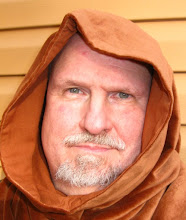It takes a certain type of person to perform the duties of a sniper.
Army Sgt. Murray Spence -- a 30-year-old sniper assigned to Multinational Division Baghdad with the 10th Mountain Division’s Scout Platoon, Headquarters and Headquarters Company, 2nd Battalion, 30th Infantry Regiment, 4th Brigade Combat Team -- is a full-blooded Sioux who was raised by German Mennonites in Canada after he was put up for adoption at birth.
The life of a sniper is challenging, to say the least. But Spence has been facing and overcoming challenges since the day he was born. He served as a reservist in the Canadian military for two years, assigned to a rifle company called the Royal Winnipeg Rifles. After leaving Canadian military service, Spence tried to return, he said, but the process was taking too long, so he enlisted in the U.S. Army. He decided to become an infantry scout and earned honor graduate honors in his sniper school class.
After I got out of the Canadian army, Spence said, he thought his military days were over. “But I got into construction,” he explained, “and just got bored. Somehow, I ended up here. Somehow I ended up a sniper in Iraq.”
Spence overcame the sweltering August summer heat of Georgia in 2007 and the challenge of mathematics to leave the sniper school with top honors. He was 28 years old when he attended the school, years removed from high school math classes. “Getting back to the math and how to figure out calculations … on the fly was pretty tough,” he admitted, “but it was worth it.”
Spence is more than just a long-range shooter. Army Staff Sgt. Tommy Peek, Spence’s platoon sergeant from Fort Polk, said Spence has provided protection for their battalion commander while moving throughout the Wild Boar operating environment and also has helped many less-experienced soldiers.
“He is a very diverse soldier,” Peek said, explaining Spence was a crew-served-weapons expert with the M-240 and 50-caliber machine guns and the Mk-19 while assigned to Company D. “All his information and guidance to the younger soldiers we had actually helped a lot in their mentorship and their understanding of the crew-served weapons systems.
“He is a cut above the rest,” Peek continued. “He is not just the basic soldier. He has a lot more to offer than just long-range target acquisition.”
Working with Spence is a “delight” because of his consistent professionalism and guidance to younger soldiers, which makes Peek’s job much easier, he said.
Because of his Canadian birth, Spence could not be considered for Special Forces, and several attempts to go to Ranger school have not worked out for one reason or another. But whatever Spence does in his life after he leaves Iraq, it is a safe bet it will not be boring.
It's worth reading the article in full. The series is called "Face of Defense," but ironically, Sgt. Spence's face is hidden in the photograph provided:









No comments:
Post a Comment